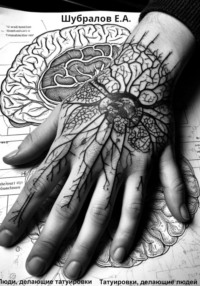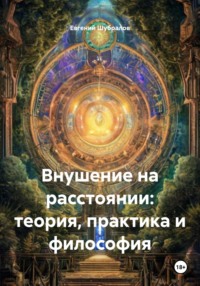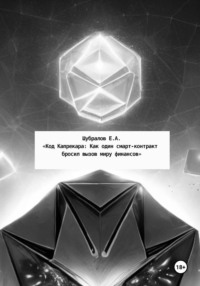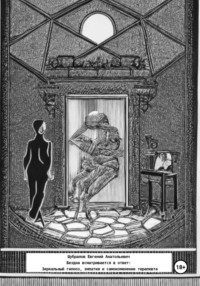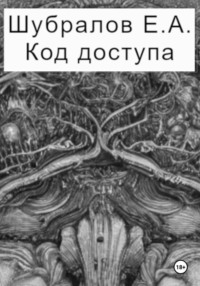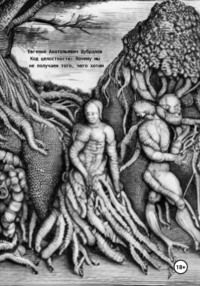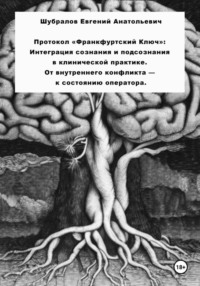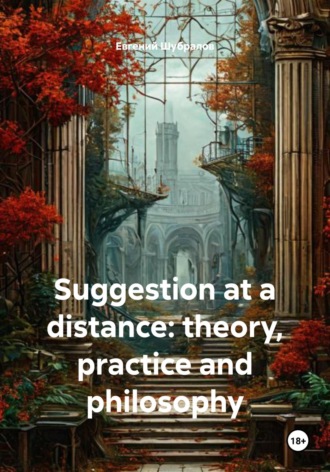
Полная версия
Suggestion at a distance: theory, practice and philosophy
One must think that the stereotypical vision of a black woman before her death in the house of Habsburg is explained not only by mutual suggestion, but perhaps also by self-suggestion, which involuntarily adjusts the imagination in a certain direction. By involuntary autosuggestion, apparently, some other dark psychic phenomena, such as premonition, can also be explained.
It is also known that autosuggestion in some cases, like hypnotic suggestion, can have a dramatic effect on the vasomotor and vegetative spheres of the body. This way, among other things, explains various stigmata and even periodic hemorrhages from those areas of the body from which the blood oozed from the crucified Christ, as shown by the example of Louise Lato, known in the medical literature and carefully verified by prominent scientific authorities.
But we would be distracted far away from the main subject of our conversation if we set out to explain in more detail the phenomena of our mental life just mentioned.
CONVULSIVE EPIDEMICS IN HISTORY
The power of suggestion is no less pronounced in the so-called psychopathic epidemics.
These psychopathic epidemics are primarily reflected in the prevailing views of the masses of the people of a given era, a given stratum of society or a given locality. But there can be no doubt that the immediate impetus for the development of these epidemics are: suggestion, mutual suggestion and autosuggestion.
The prevailing views here are a favorable ground for spreading through the involuntary transmission of certain psychopathic conditions from one person to another. The epidemic spread of the so-called demoniacality in the Middle Ages undoubtedly bears all the traces of the popular views established at that time on the extraordinary power of the devil over man; but nevertheless it is also indisputable that the development and spread of these epidemics is largely due to the power of suggestion. For example, a medieval pastor during a church service talks about the power of a demon over a person, exhorting people to be closer to God, and during this speech
The place does not allow us to dwell any longer on this burning issue; but the whole picture of the self-destructive incidents in the Ternovsky farms resolutely defies any other explanation, if we do not take into account the influence of suggestion and mutual suggestion on the basis of already ingrained superstitions, which undoubtedly played a major role here. A detailed description of the Ternovsky events, except for newspapers, can be found in the article by Prof. I. A. Sikorsky: Free deaths in Ternovsky farms. Questions of neuropsychic medicine for 1897 in one of the pathetic places, to the horror of the audience, an imaginary demon exerts its power over one of those present, plunging him into terrible convulsions. This is followed by another and a third victim. The same thing is repeated at other divine services.
Is there any doubt that here we are talking about the direct suggestion of impotence, which then passes into the life of the people and snatches its victims from the latter even outside of liturgical ceremonies.
When well-known beliefs about the possibility of the incarnation of the devil in man took root, this belief in itself already acts by mutual suggestion and auto-suggestion on many psychopathic personalities and thus leads to the development of demonopathic epidemics, which are so rich in the history of the Middle Ages.
Thanks to autosuggestion, certain mystical ideas arising from the worldview of the Middle Ages were often at the same time the source of a number of convulsive and other manifestations of great hysteria, which, thanks to prevailing beliefs, also tended to spread epidemically.
This is obviously the origin of convulsive and other medieval epidemics known as the dances of St. Nicholas. Witt and St. St. John's, a folk dance in Italy, called tarantella, and, finally, the so-called quietism. Even getting acquainted with the description of these epidemics by contemporaries, it is not difficult to make sure that mutual suggestion played a role in their spread.
The epidemic of self-flagellation that spread from Italy to Europe in 1266 is remarkable, about which the historian reports the following: "An unprecedented spirit of self-accusation suddenly took over the minds of the people. The fear of Christ attacked everyone; noble and simple, old and young, even children of about five years old wandered the streets without clothes with only a belt around their waists. Each had a whip made of leather straps, with which they scourged their members with tears and sighs so cruelly that blood poured from their wounds."
Then, in 1370, the dancing mania spread in Europe in an equally striking way, which in Italy
It took a peculiar form of tarantism. At that time, dancers filled the streets of European cities. Everyone abandoned their usual activities and household chores to indulge in a frenzied dance.
In Italy, dancing spread under the influence of the belief that a tarantula bite, which often happened in Italy, becomes safe for those who danced to the music of the so-called tarantella. This mania for tarantella spread with extraordinary rapidity throughout Italy and, as a result of its absorption of a huge number of victims, became in the full sense of the word a social ulcer of Italy.
The epidemics of convulsions are no less striking. Here, for example, is a short excerpt about medieval convulsions from Louis-Debonnaire:
"Imagine girls who on certain days, and sometimes after a few premonitions, suddenly fall into trembling, trembling, convulsions and yawning; they fall to the ground, and they are placed with pre-prepared mattresses and pillows. Then great unrest begins with them: they roll on the floor, torment and beat themselves; their head rotates with extreme rapidity, their eyes roll up and close, their tongue comes out and then retracts inside, filling their throat. The stomach and lower abdomen swell, they bark like dogs or sing like roosters; suffering from suffocation, these unfortunate people moan, scream and whistle; convulsions run through all their limbs; they suddenly rush to one side, then rush to the other; they begin to somersault and make movements that offend modesty, take cynical poses, stretch out, stiffen and remain in this position for hours and even for whole days; they temporarily become blind, mute, paralyzed and do not feel anything. There are also those among them whose convulsions are in the nature of free actions, and not unconscious movements."
Having read this description of a contemporary, who among those familiar with nervous diseases will not doubt that here we are talking about fits of great hysteria, which, as we know, is often developing epidemically?
An even more instructive picture appears to us in the description of convulsive epidemics that developed in Paris in the last century, the unifying object of which was the Saint-Medard cemetery with the grave of Deacon Paris, once famous for his ascetic lifestyle. This description belongs to the famous Louis Figuier.
"The convulsions of Jeanne, cured at the grave of Paris of hysterical contracture in a fit of convulsions, served as the signal for a new dance of St. Witt, revived again in the center of Paris in the XVIII century. with endless variations, one darker or funnier than the other.
People from all parts of the city came running to the Saint-Medard cemetery to take part in the antics and twitches. Healthy and sick, everyone insisted that they were convulsing, and they convulsed in their own way. It was a world dance, a real tarantella.
The entire area of the Saint-Medard cemetery and the neighboring streets were occupied by a mass of girls, women, patients of all ages, convulsing as if in a race with each other. Here, men hit the ground like real epileptics, while others swallow pebbles, pieces of glass and even burning coals a little further away; there, women walk on their heads with a degree of strangeness or cynicism that is generally compatible with this kind of exercise. Elsewhere, women, stretched out at full length, invite the audience to hit them on the stomach and are satisfied only when 10 or 12 men fall on them at once with all their weight.
People writhe, grimace and move in a thousand different ways. However, there are also more learned convulsions, reminiscent of pantomimes and poses in which some religious mysteries are depicted, especially often scenes from the sufferings of the Savior.
In the midst of all this discordant sabbath, only moaning, singing, roaring, whistling, recitation, prophecy and meowing are heard. But dancing plays a predominant role in this epidemic of convulsionists. The choir is led by a clergyman, Abbot Becheron, who, in order to be in full view of everyone, stands on the grave. Here, every day, with an art that cannot withstand competition, he performs his favorite "pas", the famous carp race (saute de Carpe), which constantly delights the audience.
Such bacchanalia ruined the whole business. The king, receiving daily the worst reviews from the clergy about what was happening in Saint-Medard, ordered the police lieutenant Hero to close the cemetery. However, this measure did not stop the insane frenzies on the part of the convulsionists. Since it was forbidden to convulse in public, the seizures of the Yancinists began to occur in private homes and the evil was further intensified. The Saint-Medard cemetery concentrated the infection in itself; its closure served to spread it.
Everywhere in the courtyards, under the gates, one could hear or see some unfortunate being tormented; his appearance had an infectious effect on those present and encouraged them to imitate. The evil took on such significant proportions that the king issued a decree according to which anyone convulsing was tried by a court specially established at the arsenal and sentenced to imprisonment. After that, the convulsionists only became more adept at hiding, but they did not get out." Regnard. Mental epidemics.
Having become acquainted with these peculiar social phenomena, can there be any doubt that the epidemics of convulsions developed due to mutual suggestion on the basis of religious mysticism and severe superstitions.
IS IT A MENTAL SUGGESTION OR A TRICK?
(Published by: Review of Psychiatry, Neurology and Experimental Psychology, 1904, No. 8).
Questions of mental suggestion cannot fail to interest mankind until the existence of this suggestion is finally resolved in one sense or another on the basis of reliable data. In view of this, the collection of factual material related to this issue should be in the foreground, since an appropriate assessment of this material should serve to finally clarify this extremely important and at the same time highly sensitive issue.
Guided by this, we cannot but draw readers' attention to the experiments of mental suggestion performed by Dr. Kotik and Dr. Pevnitsky in collaboration with other doctors over Sophia Starker, who performed in one of the Odessa booths.
It should be noted that such performances in folk theaters do not seem to be exceptionally rare, and as recently as April 1903, I myself managed to observe a similar demonstration of mental suggestion in one of the folk theaters in Vienna, where the very demonstration of phenomena was carried out under the following conditions.
A young lady sat on a chair in the middle of the stage in front of the audience, and her eyes were tightly blindfolded with a large handkerchief. Then someone from the audience was invited to participate in the experience and think of one word or another – it doesn't matter which one. The participant of the experiment sat down near the guesser, who put her hand on his forehead and after a short period of time said aloud the words that he was thinking. This was done with several people, and the guessing of both specific and abstract words was carried out with apparent ease and unmistakably. Then experiments were carried out with guessing objects in the pockets of the audience present with the help of an elderly inductor, with whom experiments of this kind were usually carried out. For this purpose, the latter walks around the audience, gropes for things in his pocket and, if he does not recognize them by touch, asks them to take them out so that he can make sure what exactly is in front of him; then, thinking about them and without uttering a single word, he asks the guesser: what is here or what is it? All questions were posed quite monotonously, things in most cases remained in the pockets of the audience and only if they were not recognized by touch, were shown to the inductor, but in such a way that only he, their owner and the nearest neighbors could know them; the guesser during these experiments was at least 15-40 steps away and She remained blindfolded all the time; therefore, she could not see objects in any case.
There could also be no conditional communication between the inductor and the guesser, since the questions of the former were always monotonous and without any special changes in the intonation of the voice, and there could be no question of any mechanical communication. The answers for the vast majority of subjects were given by the guesser correctly, and simple objects such as an orange, lemon, comb, rope, knife, toothpick, etc., were given quickly and confidently, while less ordinary objects were guessed, although also in the vast majority of cases accurately, but less quickly. Guessing some items even required a decent amount of time. Occasionally mistakes were made in this case; but these mistakes were almost immediately corrected after pointing out that the answer was incorrect on the part of the inductor. Sometimes errors indicated the subject only approximately, for example, instead of "notebook" the answer was "ticket", when then the inductor pointed out her mistake and demanded that the guesser think further, after some time she said correctly: "Book"; to the question: "Which one?" she answered: "The notebook." This was followed by questions about what was written in the book, and the inductor consistently forced the guesser to say at least two dozen entries that were made in this book, and all these entries were read relatively quickly and with punctual accuracy without even the slightest signs on the part of the inductor.
According to the general formulation of the case with guessing thoughts, there was obviously a lot of similarity with how Sophia Starker did her experiments. Unfortunately, I was deprived of the opportunity to do a number of experiments with the guesser under different conditions, I can only say that, being myself the closest observer of those demonstrations discussed above, I found absolutely nothing in them that could be recognized as a deception or trick. Nevertheless, in order to solve the question of mental suggestion, it is highly desirable not only to state the fact, but also to comprehensively study the conditions under which the experiments themselves are carried out.
If it is confirmed that in cases of this kind we are dealing with a real mental suggestion, then the explanation of the phenomena themselves by means of energy transfer from one person to another is imposed by itself. Be that as it may, we must not lose sight of the fact that the question of mental suggestion is gradually moving out of the realm of the mysterious and unknown, since with the development of the doctrine of the psyche as a manifestation of energy and with the discoveries of Blondlot and Charpentier about the rays emanating from the nervous tissue during its activity, the very possibility of mental suggestion becomes a phenomenon, not at all it does not contradict our basic scientific views. Bekhterev V. Psyche and life. 2nd ed. 1906. pp. 167-168.
In view of this, it is highly desirable that serious scientific figures cease to treat the study of the phenomena of mental suggestion with the disdain that, with small and well-known exceptions, manifested itself in their environment until
later.
1906
THE BASIC CONCEPTS OF SUGGESTION AT A DISTANCE
In his book devoted to the scientific interpretation of the so-called "mysterious phenomena" of the human psyche, L.L. Vasiliev has already had the opportunity to tell readers about verbal suggestion and about the amazing phenomena caused by suggestion. Repeated repetition of words: "Go to sleep, go to sleep! Sleep! Sleep deeper, more calmly!" the one who inspires manages to put some subjects into a hypnotic sleep. The features of this dream were studied in detail in our country by V.M.Bekhterev, and its physiological basis was revealed by the experiments of I.P.Pavlov, his teaching on higher nervous activity. In hypnotic sleep, suggestibility increases enormously. Thanks to this, hypnotists manage to verbally inspire a lot: various kinds of movements, certain actions, sometimes very complex; various sensations, illusions, even hallucinations; and moreover, it creates the opportunity to influence the physiological functions of the body with a word, seemingly not at all controlled by the will, the psyche of the subject. For example, to cause him an induced burn.
Some of these phenomena can be caused in a weakened form by verbal suggestion in sleep-deprived subjects, if only they have an increased "excess" suggestibility already in the waking state.
Such facts were to some extent known to Greek and Roman doctors, but centuries passed before hypnosis and suggestion were finally recognized and formed the content of a special science – hypnology.
In the same book, in the chapter devoted to the question of whether there is a brain radio, the author has already touched on the topic of this brochure: does suggestion necessarily have to be verbal, i.e. be caused by words understandable to the subject? Is it also possible to have a "wordless", "mental" suggestion, such as when the experimenter inspires something not with spoken words, but only with a mentally repeated order, sometimes at a considerable distance from the subject?
Mental suggestion belongs to such questions that for centuries have been capturing the attention of scientists, then thrown into the trash can of the pseudoscientific quest of the human mind (there have been quite a few of them in the history of science) then they come to the surface again, enriched with new observations, and again they are forgotten for many years.
In foreign countries, especially in the USA, England, France, Holland, India, Argentina, as well as in some socialist countries, great attention is paid to the study of this phenomenon. In capitalist states, there are institutes, laboratories, even university departments (for example, in Utrecht) engaged in the study of mental suggestion and other "parapsychic" phenomena related to it.
From time to time, information about sensational experiments and discoveries in the field of brain and psyche studies comes to us from abroad. For example, in December 1959 and February 1960, articles appeared in French popular science magazines describing a sensational experience allegedly conducted in the summer of 1959 aboard the American nuclear submarine Nautilus. The boat with the participant of the experiment (A) on it sank to the bottom of the Atlantic Ocean for 16 days. Another participant in the experiment (B), who stayed on the shore, twice a day, at a strictly defined time, mentally inspired the subject with one of the five figures: a circle, a square, a cross, a star, wavy lines.
Numerous cards with the image of these figures were automatically shuffled by a special device, which threw these cards one after another at regular intervals. At exactly the same time, subject A, at a distance of many hundreds of kilometers, through the thickness of seawater and the hermetically sealed metal skin of the boat, tried to perceive these mentally transmitted signals and wrote them down on paper. The experiment was conducted under conditions of apparently impeccable control over the participants of the experiment, lasted 16 days and gave a result more than 3 times higher than the result that could be expected according to probability theory: over 70% of correct answers instead of the expected 20%.
Of course, we have the right to believe or disbelieve such information coming from abroad, to recognize or not to recognize the phenomena of mental suggestion as an established fact, but complete denial and ignoring them can hardly be considered prudent. It is necessary to be aware of what has already been done and what is being done on this issue in capitalist countries, not to mention that it is necessary to give a correct, materialistic explanation to all this. That is why, at the Physiological Institute of Leningrad University in 1960, under the guidance of the author of these lines, the first laboratory in the Soviet Union was organized to study mental suggestion.
First of all, it was necessary to familiarize yourself with the extensive literature that has accumulated over the past two or three decades. To some extent, it was possible to do this and partially use the studied literature when writing this brochure.
Конец ознакомительного фрагмента.
Текст предоставлен ООО «Литрес».
Прочитайте эту книгу целиком, купив полную легальную версию на Литрес.
Безопасно оплатить книгу можно банковской картой Visa, MasterCard, Maestro, со счета мобильного телефона, с платежного терминала, в салоне МТС или Связной, через PayPal, WebMoney, Яндекс.Деньги, QIWI Кошелек, бонусными картами или другим удобным Вам способом.


